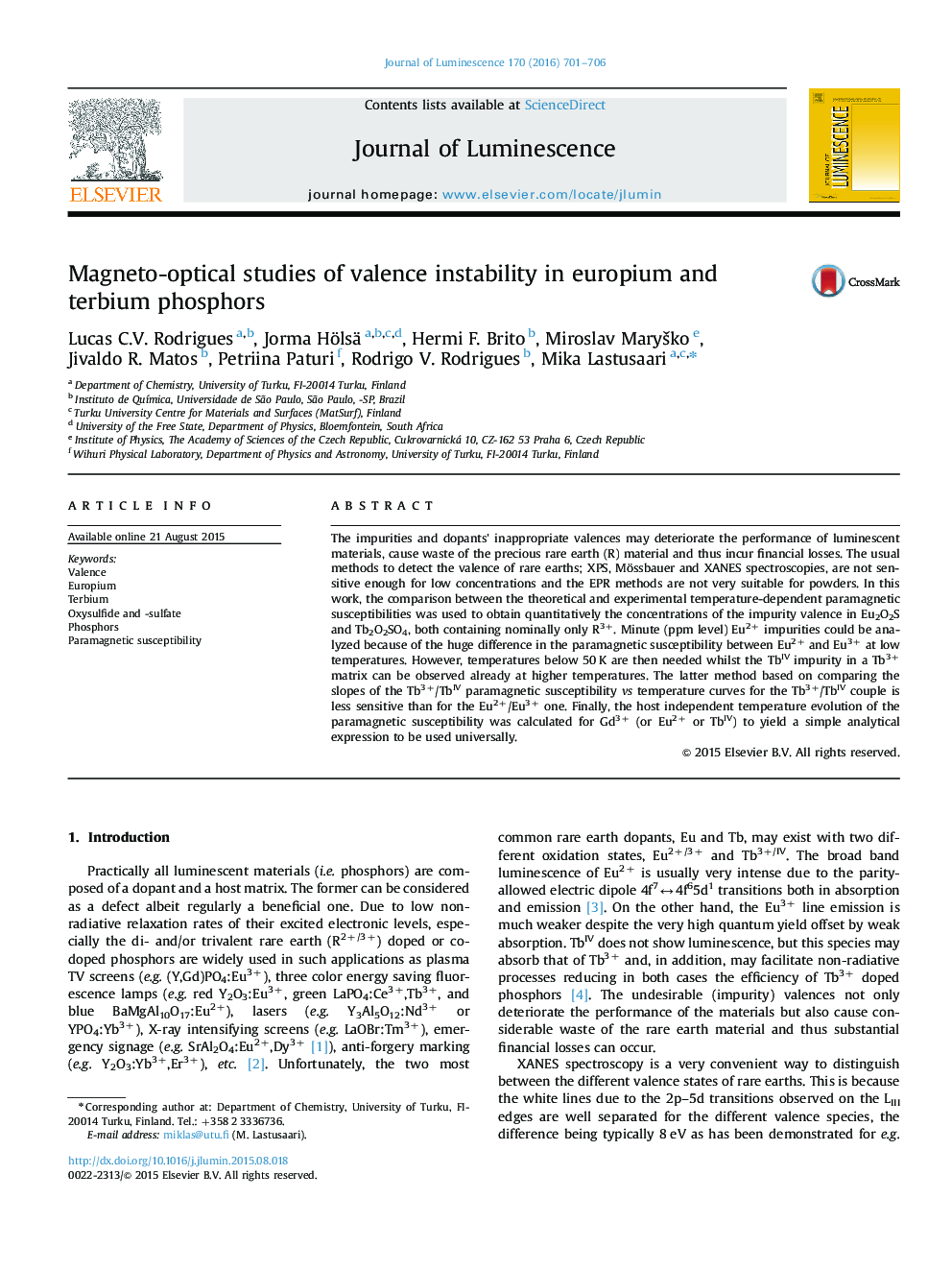| Article ID | Journal | Published Year | Pages | File Type |
|---|---|---|---|---|
| 5399040 | Journal of Luminescence | 2016 | 6 Pages |
Abstract
The impurities and dopants' inappropriate valences may deteriorate the performance of luminescent materials, cause waste of the precious rare earth (R) material and thus incur financial losses. The usual methods to detect the valence of rare earths; XPS, Mössbauer and XANES spectroscopies, are not sensitive enough for low concentrations and the EPR methods are not very suitable for powders. In this work, the comparison between the theoretical and experimental temperature-dependent paramagnetic susceptibilities was used to obtain quantitatively the concentrations of the impurity valence in Eu2O2S and Tb2O2SO4, both containing nominally only R3+. Minute (ppm level) Eu2+ impurities could be analyzed because of the huge difference in the paramagnetic susceptibility between Eu2+ and Eu3+ at low temperatures. However, temperatures below 50Â K are then needed whilst the TbIV impurity in a Tb3+ matrix can be observed already at higher temperatures. The latter method based on comparing the slopes of the Tb3+/TbIV paramagnetic susceptibility vs temperature curves for the Tb3+/TbIV couple is less sensitive than for the Eu2+/Eu3+ one. Finally, the host independent temperature evolution of the paramagnetic susceptibility was calculated for Gd3+ (or Eu2+ or TbIV) to yield a simple analytical expression to be used universally.
Related Topics
Physical Sciences and Engineering
Chemistry
Physical and Theoretical Chemistry
Authors
Lucas C.V. Rodrigues, Jorma Hölsä, Hermi F. Brito, Miroslav MaryÅ¡ko, Jivaldo R. Matos, Petriina Paturi, Rodrigo V. Rodrigues, Mika Lastusaari,
